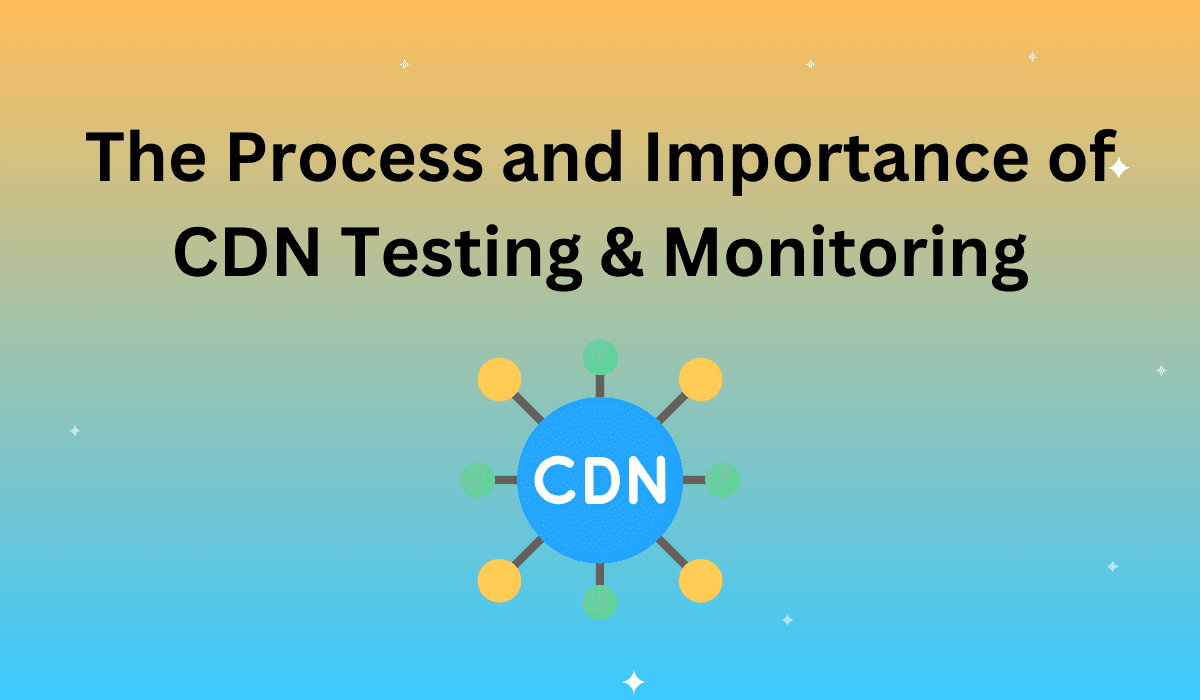The Content Delivery Network (CDN) is a concept involving a group of servers used at multiple locations across the globe, each hosting the same content for delivery. The content from the nearest server (CDN node) is delivered to the end user. This system supports fast, secure, and reliable delivery of the content and reduces the load on the web servers.
Modern web and mobile applications increasingly promote innovative features and dynamism, both of which are compelling for end users. But performance and availability are critical factors for their successful deployment. Here, a CDN plays an important role in meeting the end user requirements.
As with anything else, the testing of your chosen CDN platform is a must before the application goes live. We will dive into the basic steps for testing a CDN setup below, as well as a useful method for testing and validating CDN performance over time.
Best strategies for CDN testing and validation
Use the existing website name (URL) as CNAME
Before beginning the test, the owner of the website must delete the existing DNS record.The first step is to make a CNAME for the URL given by the CDN provider. In this method, the existing website name (URL) is used as the CNAME for the new URL given by the CDN provider.
After this, clear the browser cache and test the website to see if it’s working normally. It should function correctly as long as the DNS changes are correctly propagated to the ISP.
The IP address can also be checked using a ping command. This testing method is not the most efficient, but it gets the job done.
Map IP in the host file
In this method, the IP of the URL furnished by the CDN provider is mapped with the existing URL (website) in the host file.Next, the browser and DNS cache are cleared. Now the site should be tested to check performance.
This is a more efficient testing method compared to the previous one.
Use HOST header information
In this approach, the server information and the host header information are manipulated to test the new CDN setup.First, the client must identify the IP address of the URL provided by the CDN provider. Next, the client creates an HTTP connection with the IP returned in the previous step. Then the client requests the desired file from the server, including the original URL (which was used before) in the request header. The server uses the host header information to find the virtual mapping zone.
Now you are connected to the CDN-provided URL to get the response. This is one of the most effective methods to test a CDN setup.
Use CDN monitoring as a means of validation
In addition to initial CDN setup testing, it is wise to monitor CDN functionality and performance on your end to validate the delivery network is performing as it should.How long does it take to download an object from a CDN, and is that time relatively constant over time? A performance monitoring service, such as Apica WPM, makes is possible to keep an eye on CDN performance over time.
Establish performance benchmarks to better understand if and when the delivery network isn’t performing as promised. Even see how the CDN is caching your content in real-time. This information can be extremely useful if you suspect the CDN may not be performing up to par, or just to give you a better understanding of how your site functions on a day-to-day basis (for all you data dweebs out there!).




